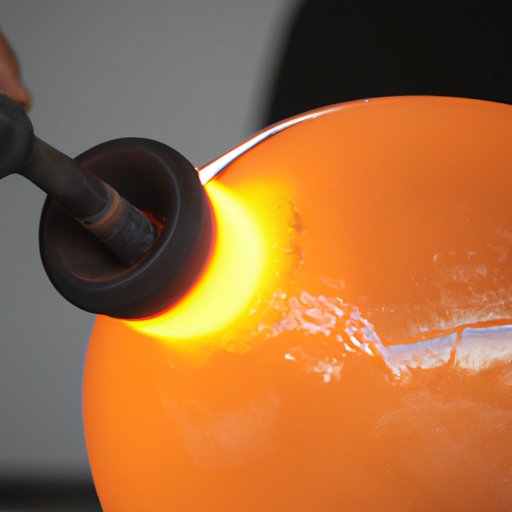
I. Introduction
Glass is a ubiquitous material found in our daily lives, from the windows we look through to the screens we touch. It’s also a material that dates back to ancient times, with methods of glass-making evolving over centuries. In this article, we will explore the steps involved in making glass, the science behind it, the art of glass-making, sustainable practices in the industry, and much more!
II. A Step-by-Step Guide to Making Glass: From Sand to Shimmering Sheets
The raw materials that make up glass are sand, soda ash, and limestone. These materials are heated in a furnace to create molten glass, which is then shaped and cooled into various forms. The steps involved in glass-making include mixing the raw materials, melting them, shaping the glass, cooling down the glass, and refining it. Safety measures include wearing protective gear when working with hot glass and using proper ventilation systems in the manufacturing facility.
III. The Science of Glass-Making: Behind the Magic of Clear, Translucent, and Colored Glass
Understanding the science of glass-making can help us appreciate the material’s unique properties. Glass is an amorphous solid, meaning it is solid but without a crystalline structure. The type of glass produced depends on the raw materials used, the temperature at which the glass is melted, and the cooling time. Factors affecting the color, clarity, and strength of glass include the quality of raw materials, the melting temperature, and the cooling rate.
IV. How Glass-Making Technology Has Evolved Through the Ages
The production of glass can be traced back to ancient Egypt and Mesopotamia. Glass-making remained a manual and expensive process until the Industrial Revolution, which facilitated improvements in mass production techniques. Glass-making technology continues to evolve; today, we have automated glass production lines that reduce the amount of manpower, time, and energy needed to produce glass products.
V. The Art of Glass-Making: A Creative Journey in Glassblowing and Bead-Making
Glass-making is not only a science but also an art form. Glassblowing is the most popular method of making artisanal glass, where an artist shapes the molten glass using a blowpipe to create functional and decorative pieces. Bead-making, on the other hand, is the art of creating small, intricately detailed glass works. Some famous glass artists include Dale Chihuly and Lino Tagliapietra.
VI. The Environmental Impact of Glass-Making and Sustainable Practices
Like any industry, glass-making has a negative impact on the environment. The manufacturing of glass requires a tremendous amount of energy and greenhouse gas emissions, leading to air pollution. As a result, companies are taking measures to reduce the amount of energy and emissions generated during glass-making. Some of these measures include using recycled glass and improving the efficiency of the manufacturing process.
VII. Discover the World’s Most Fascinating Glass-Making Destinations
Glass-making is a global industry, with countries such as Italy, Sweden, and the Czech Republic having a rich history in the field. Some famous glass-making destinations include Murano, Italy; Kosta Boda, Sweden; and Bohemia, Czech Republic. Tourists can witness glass-making demonstrations, visit glass museums, and purchase unique glass products.
VIII. From Stained Glass Windows to Smartphone Screens: The Versatile Applications of Glass-Making
Glass-making has a wide range of applications, from the creation of windows, bottles, and jars to high-tech uses such as smartphone screens, solar panels, and fiber optics. The versatility of glass allows it to be adapted to various industries, making it a vital material in the modern world. Innovations such as Gorilla Glass have improved the strength and durability of glass products, expanding their potential applications.
IX. Conclusion
Glass-making is a fascinating subject that touches many aspects of our lives, from the artistry of glassblowing to the cutting-edge applications of smartphone screens. Understanding the science, history, and impact of this industry can help us appreciate the material in a new way. As we continue to grapple with environmental concerns, glass manufacturers must adapt sustainable practices to ensure the longevity of their industry.




